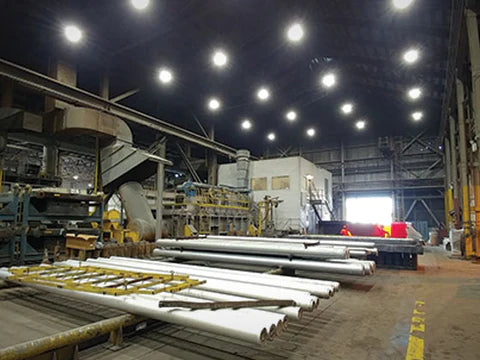By now we're all pretty much aware that LED lighting is more efficient than incandescent, halogen, metal halide, high pressure sodium, mercury vapor, and even fluorescent and CFL lighting, but did you know that it can be even more efficient than you thought?
You may have seen the terms "high lumen" and "ultra high lumen" used lately and wondered if those terms just mean that the lights are brighter than the others. They are, but there's more to it than that.
High (and ultra high) lumen lighting is what we call it when a light has exceptional "luminous efficacy." Luminous efficacy is measured in "lumens per Watt," which means the amount of light output per Watt of energy usage. A 100W incandescent bulb, for instance, has a luminous efficacy of about 17.5 lumens per Watt, which means that takes 100 Watts to produce about 1750 lumens of light. The higher the luminous efficacy, the more efficient the light is in producing illumination.
- A standard LED bulb with a luminous efficacy of 80 lumens/Watt uses just 22 Watts to produce the same amount of light as a 100W incandescent bulb.
- A high lumen LED bulb with luminous efficacy of 103 lumens/Watt would use only 17 Watts.
- An ultra-high lumen LED bulb with 117 lumens/Watt luminous efficacy would use just 15 Watts.
The efficiency of high-lumen LED products means that you often get more light for the same Wattage as standard LED lights. Ultra-high-lumen LEDs give you significantly more light, often with only a small increase in Wattage. This results in the largest possible energy and cost savings!
If you're looking for the brightest LED lights at the lowest wattages, check out our brightest, most energy-efficient LED lights. Here you'll find ultra-high-lumen lights with exceptional luminous efficacy for a wide variety of commercial applications to help you save the most money year-over-year with your LED conversion.

 215.355.7200
215.355.7200




